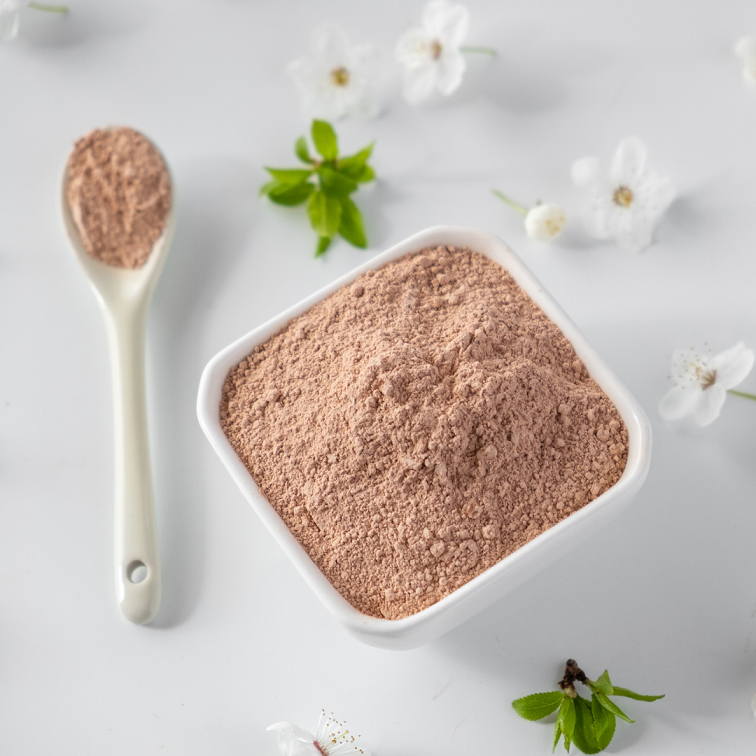
Dating back to the prehistoric era, the earliest humans used clay to treat minor ailments such as food poisoning, aches and pains, infections, and mineral deficiencies. They even turned to clay for spa and beauty treatments. The first written reference known to exist was the use of “stones” and a description of their mineral benefits that dates to 60 BC Rome.
There are indications that homo erectus and homo neanderthalensis used ochres mixed with water and different types of mud to cure wounds, soothe irritations and as a method of skin cleaning. There is thought that this might be due to their mimicking animals, many of which instinctively use minerals for these purposes.
The thought of using clay on the skin is nothing new. The use of clay as a beauty product is as old as humankind. Throughout history clay has been used topically to soothe the skin or internally for medicinal purposes. The first reference to the deliberate eating of clay or dirt is found by Aristotle (384-322 BC) where he refers to the practice for therapeutic and religious purposes. Later Marco Polo described how in his travels he saw Muslim pilgrims cure fevers by ingesting “pink earth”. The Chinese have used kaolinite for thousands of years for medicinal purposes, toothpaste, cosmetics, facials and for soap.
Minerals are the main source of life on our planet, and are imperative to our survival. Minerals are necessary for all processes in the body, including the assimilation of vitamins, fats, proteins, and carbs; as well as biochemical functions that occur. Minerals help with everything from muscle contractions to the production of hormones. A natural source of all the minerals used and consumed by humans, for a variety of purposes, is clay.
Clays are soft mineral substances; a product of weathered volcanic ash. Clay is formed as a result of volcanic activity subjected to environmental influences (physical and chemical) over a period of time. Clays differ in structure and composition depending upon the source. Just like there are no two identical fingerprints, it is impossible to find two identical clays. They come from different sources, each source with its own unique mineral compositions. Clays consist of tiny particles that can absorb large amounts of water. As a result, many clays can expand immensely upon hydration.
Clays can absorb minerals and organic substances, such as metals. There is an electric charge created between the clay layers, as well as on the edge of its particles. This makes clays adsorb and absorb heavy and radioactive metals, free radicals and other unwanted products of metabolic activity.
Due to the differing chemical compounds, each clay type has its own beneficial uses, dependent upon its origin and properties. Clay also contains some antibacterial properties. Minute particles envelope bacteria and deprive it of nutrition and oxygen. This property makes clay a natural antibacterial agent.
What is pink clay?
Pink clay, also known as Rose Clay, is a combination of red and white clays, usually of the Kaolin variety. Kaolin clays were first discovered in China’s Gaoling valley – ‘kaolin’ is a derivative of the Mandarin ‘Gaoling’, which means ‘high ridge’, but they’re found all across the world. Kaolin clay is a natural emollient, which can be topically applied to soften skin.
Pink clay is associated with a wide variety of benefits for skin. Although pink clay benefits are poorly represented in scientific literature, beauty lovers self-report that pink clay has a wide variety of uses that enhances the appearance of their skin.
Pink clay is known for its strong mineral content, as it contains magnesium, selenium, and zinc. It is mild and gentle and primarily used for dry, extra-sensitive and mature skin. Pink clay exhibits a softening effect on the skin’s texture and has been reported to make an excellent hair conditioning treatment along with assisting to reduce irritation and inflammation related to aggravating skin conditions including acne.
Pink Clay has a lower iron content than the red clay hence the lighter colour. This essential minerals to help replenish and regenerate the epidermis of the skin to create softened and conditioned skin with a healthy glow.
Pink Clay is also rich in Silica, which may help to improve skin elasticity and cell renewal, resulting in supple, younger-looking skin. Gently exfoliating, Pink Clay leaves skin feeling silky-soft and smooth. Plus, it can help to minimise blackheads and promote a radiant and balanced complexion.
Skin improvements that have been associated with pink clay use include:
Brighter skin; the lightly exfoliating effect of pink clay works to remove dead skin cells and reveal bright, fresh cells underneath
Remove excess oil; clay face masks are praised for their natural, mattifying effect.
Moisturise; pink clay contains essential minerals which work to naturally enrich skin, for a hydrating effect.
References:
Aussie Soap Supplies. 2023. Clay – French Pink. [ONLINE] Available at: https://aussiesoapsupplies.com.au/clay-french-pink/?gclid=CjwKCAiA2fmdBhBpEiwA4CcHzUHxhDxmRmoGoyqfR7fslY39DWIg4olG2UdjdTkCSqCjdpfj-sVpxxoCjvYQAvD_BwE. [Accessed 12 January 2023].
Aussie Soap Supplies. 2023. Clay – French Pink. [ONLINE] Available at: https://aussiesoapsupplies.com.au/clay-french-pink/?gclid=CjwKCAiA2fmdBhBpEiwA4CcHzUHxhDxmRmoGoyqfR7fslY39DWIg4olG2UdjdTkCSqCjdpfj-sVpxxoCjvYQAvD_BwE. [Accessed 12 January 2023].
Chirp Internet. 2023. The 4 different types of clay for skin – and what they do | Nourished Life. [ONLINE] Available at: https://www.nourishedlife.com.au/article/825809/different-types-clay-skin.html#:~:text=Pink%20Clay%20is%20rich%20in,a%20radiant%20and%20balanced%20complexion.. [Accessed 12 January 2023].
Healthline. 2023. Clay Mask Benefits for Your Skin and Hair, and How to Use Them. [ONLINE] Available at: https://www.healthline.com/health/clay-mask-benefits#summary. [Accessed 24 January 2023].
Holland & Barrett. 2023. What Is Pink Clay: Benefits & Uses | Holland & Barret. [ONLINE] Available at: https://www.hollandandbarrett.com/the-health-hub/natural-beauty/skincare/pink-clay-benefits/. [Accessed 24 January 2023].
A Brief History and Many Benefits of Clay | Enviromedica . 2023. A Brief History and Many Benefits of Clay | Enviromedica . [ONLINE] Available at: https://enviromedica.com/blogs/learn/history-and-benefits-of-clay. [Accessed 24 January 2023].
ClayLove. 2023. About Clay – ClayLove. [ONLINE] Available at: https://claylove.com/pages/about-clay. [Accessed 24 January 2023].
